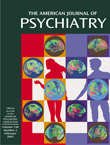This is a fascinating book edited by three prominent French psychiatrists (colleagues and friends of mine for many years) that presents a comprehensive anthology of writings that have appeared in French from 1792 to almost the present. Many of the authors featured should be well-known by Americans, e.g., Pinel and Janet; some probably unknown, e.g., Daquin and Ey; some recognizable through syndromes named after them, e.g., Briquet, Tourette, Capgras, and de Clérambault; and some whom one might reasonably consider as “ringers,” e.g., Bleuler, Freud, and Serbsky (he who was tagged with discovering the diagnosis of “sluggish schizophrenia” pinned on Soviet dissidents, but who was the opposite in orientation to those serving the Soviet state apparatus). But all have made significant contributions to psychiatry, especially psychiatry in France. The anthology is lifted from the level of its genre because of introductory passages to the section on each author, which are well written, informative, and nicely translated, providing delightful nuggets of information in an unexpected manner. Let me give you some examples:
Joseph Daguin (1732–1815) is the first author discussed in the volume. Daguin wrote the first real psychiatric text in France, unfortunately (for Americans who regard such titles as stereotypic of French science) titled The Philosophy of Madness, in 1791. What Daguin espoused was really supportive psychotherapy in the context of moral treatment, which he was the first to articulate. Before Pinel, whom he admired, he saw the mentally ill as people suffering from illness who needed treatment, not just incarceration. He also advocated a variety of active treatments (psychological and biological), including what may be the first description of electroshock therapy.
Philippe Pinel (1745–1826), the second author featured, whom we Americans credit with being the first person in the world to see the mentally ill as people and strike off their chains, was actually preceded not only by Daguin but by the warden of the Bicêtre, Jean-Baptiste Pussin, who was the first to strike off the chains of the male patients there and who was then brought by Pinel to the Salpétrière to do the same in the female section (1802). Pinel, too, wrote a text (as did many of the French psychiatrists featured in this volume), classifying illnesses according to a system he perfected in more than 800 patients.
I could go on with other explications about each specific author mentioned in the book but will instead provide only a few of the gems that I found fascinating, regarding several of the 33 psychiatrists featured in the book. These include the following:
•Esquirol, who instigated the law of 1838 that mandated asylums in each French département (governmental area).
•Itard, who treated the wild boy of Aveyron (1801–1805).
•Moreau, who studied hashish and hallucinations.
•Lasegue, who was fascinated by female shoplifters (1880) and male “energetic masturbators,” and who was the first to describe shared delusion (1887), e.g., folie à deux.
•Azam, who described “double life,” whose modern equivalent is multiple personality disorder.
•Magnan, who railed against the use of absinthe, among other drugs, and coined the term “dipsomania.”
•Cotard, who described “nihilistic delusions,” e.g., the belief that one has no organs inside one’s body.
•Bernheim, who coined the terms “psychotherapy” and “psychobiology.”
•Binet, who in addition to his work on intelligence was interested in fetishism and human calculators.
All in all, this was a pleasant read. I enjoyed the book over a several-week period, during which I dipped in and out of all these famous psychiatrists’ histories, passions, and writings. However, I suspect it is a book whose appeal will not be universal but mainly limited to those with a love of France and French culture.

